The Lord’s Prayer
As I searched for illustrations for the Seasons video, I found it hard to find photos for the winter season of our lives. While searching in the Library of Congress collection, I saw this photo of an elderly man carving a walking cane. It wasn’t appropriate for the video, but I saved it to show to you later.
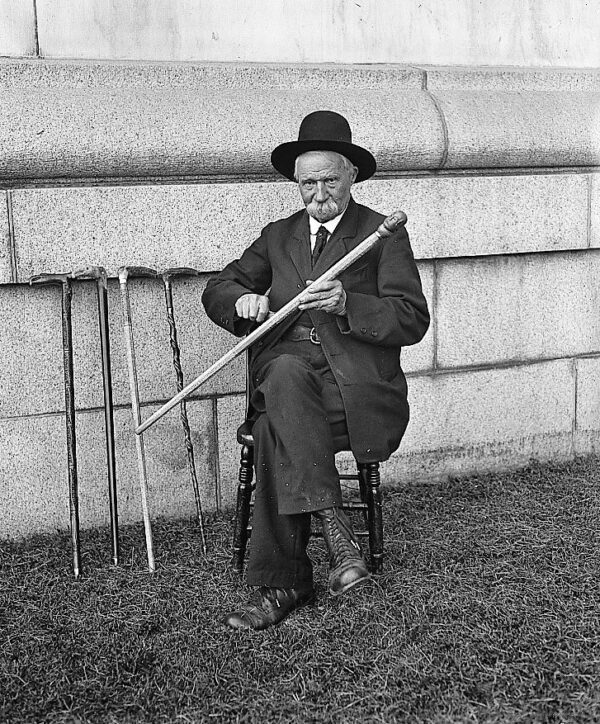
The caption read: “A. Buck of the Soldiers’ Home carving the Lord’s Prayer on walking canes. He has sold $2000 worth of these canes. Sept. 21, 1922.” I can’t imagine being able to carve the Lord’s Prayer on a walking cane. I certainly can’t imagine carving $2,000 worth, especially not in 1922 dollars.
Many people have created works of art with the words of the Lord’s Prayer, including this 1889 poster inscribed with calligraphy with ink and watercolor by artist John Morgan Coaley.
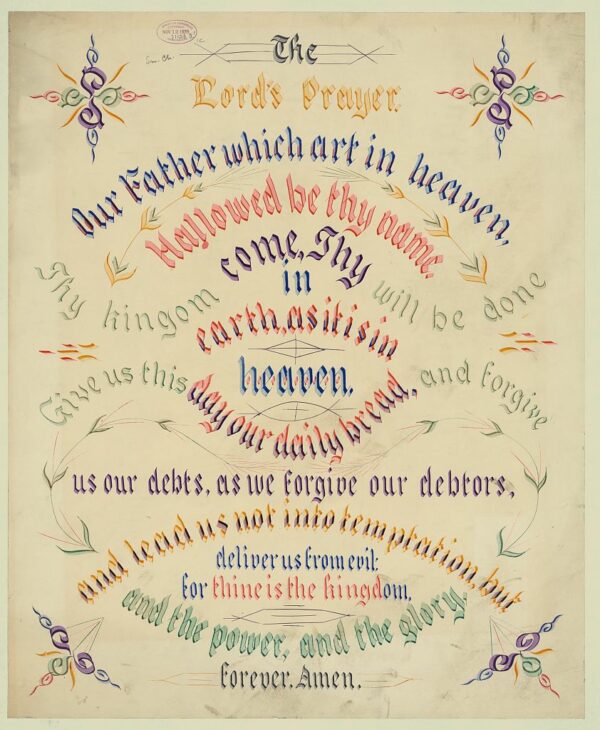
Another work of art with the words of the Lord’s Prayer is this rock alongside the main road into Bristol, Vermont. Dr. Joseph C. Green grew up in nearby South Starksboro. One of his first jobs was to travel this road to deliver logs to the sawmill in Bristol. At the time, it was a dirt road with many obstacles. Green also had to cross many streams. When he reached this rock, he would say a silent prayer to thank God. In 1891 Dr. hired a carver to inscribe the Lord’s Prayer on it.

When we wrote From Adam to Us, we included photographs from the Matson Photograph Collection which are preserved by the Library of Congress. Most of this collection consists of photos taken by the American Colony. The American Colony was a group of Americans who moved to Israel in the early 1880s. In 1898 the colony bought an old camera. The pictures they would take of the Holy Land and the Middle East became famous around the world.
Horatio Spafford and his wife Anna were founding members of the American Colony when they and 16 other members of their church in Chicago moved to Jerusalem in 1881. The Spaffords and their fellow immigrants were hospitable to their Jewish, Arab, and Bedouin neighbors. They gained a reputation for their benevolence in the community. Descendants of members of the American Colony still own and operate the American Colony Hotel in Jerusalem today though Spafford’s grandson, Horatio Vester, handed over management of the hotel to a Swiss firm in 1980 when he retired. Jerusalem is also home to the Spafford Children’s Center, which offers medical and welfare help for local children.
Horatio Spafford is best known today as the author of the beautiful hymn, “It Is Well with My Soul,” a mainstay of the church where I grew up. Spafford wrote the hymn in 1871 while traveling to England to bring his wife home after she survived a shipwreck on the Atlantic Ocean. Their four daughters perished in the shipwreck. The Library of Congress also has this manuscript of the hymn. Spafford wrote the hymn as he sailed over the location where his daughters drowned.
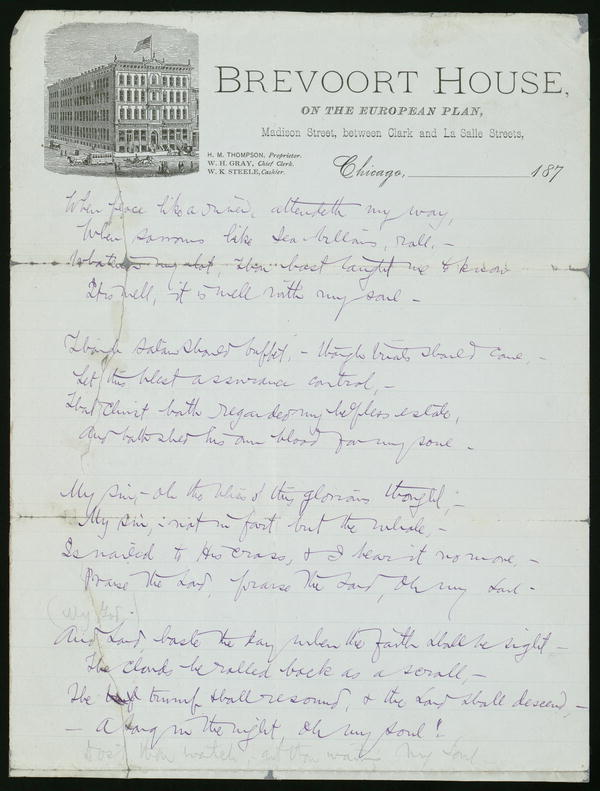
While on the voyage to England, Spafford wrote this to his half sister: “On Thursday last we passed over the spot where [the ship] went down, in mid-ocean, the waters three miles deep. But I do not think of our dear ones there. They are safe, folded, the dear lambs.”
This photo of the Lord’s Prayer in the Greek language is part of the Matson Photograph Collection. It was taken in the mid- to late-1930s in the Church of Pater Noster on the Mount of Olives in Jerusalem. The photo is part of the Matson Photograph Collection.
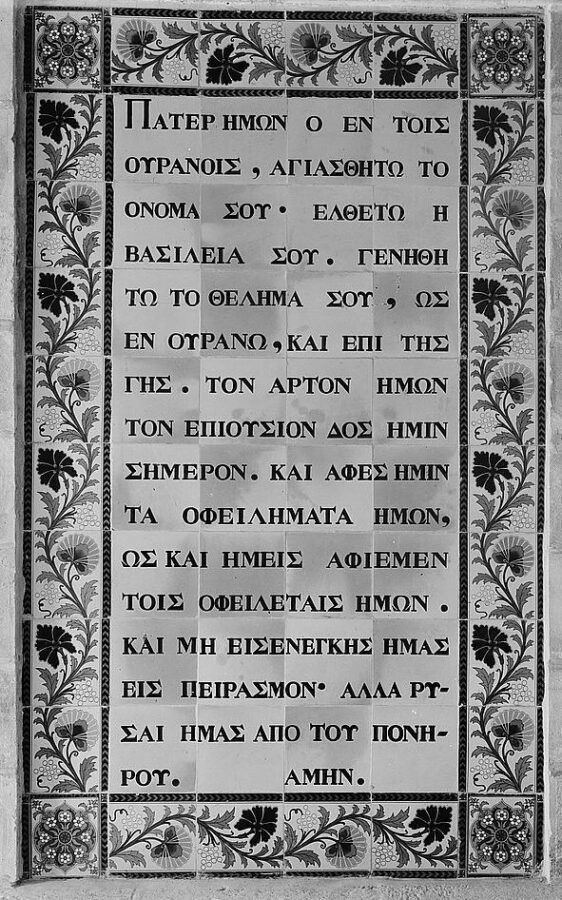
Another photo in the collection is this one of the Lord’s Prayer in the Welsh language. It was taken on the Mount of Olives between 1940 and 1946.
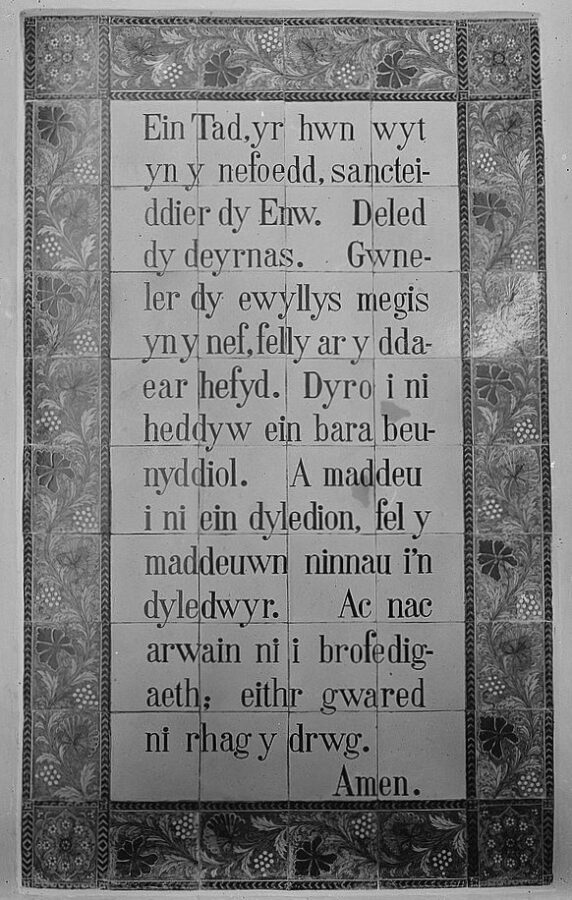
Thank You, Lord Jesus, for teaching us to pray and for giving us comfort when we face the hardest things in life.
Blessed be the God and Father of our Lord Jesus Christ,
the Father of mercies and God of all comfort,
who comforts us in all our affliction
so that we will be able to comfort those who are in any affliction
with the comfort with which we ourselves are comforted by God.
For just as the sufferings of Christ are ours in abundance,
so also our comfort is abundant through Christ.
2 Corinthians 1:3-5

